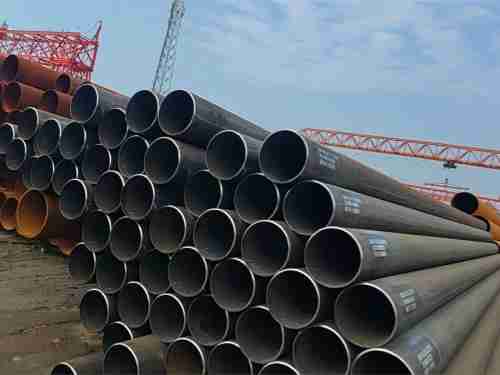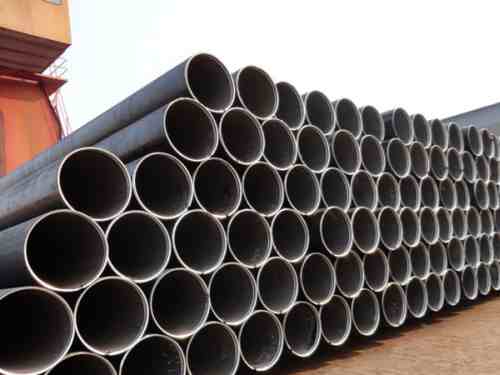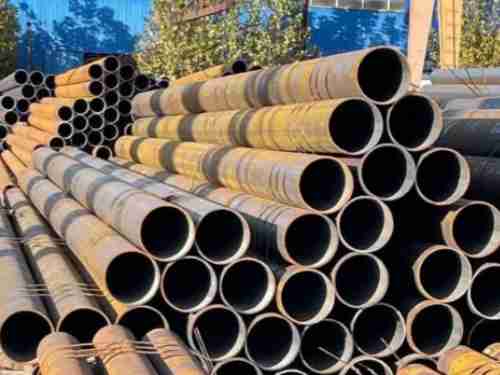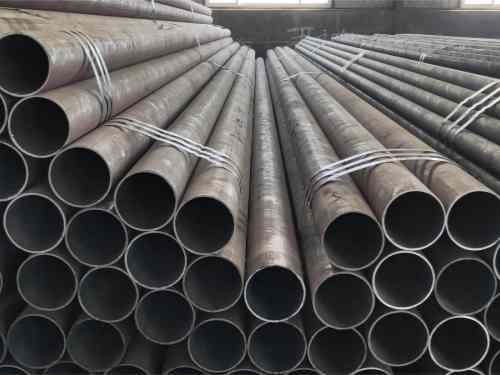Definition of Seamless Pipe
A seamless steel pipe is a steel pipe without welded joints, typically produced by piercing a solid round billet and forming it through multiple rolling and sizing processes.
Because it has no seams, seamless pipe offers excellent strength, pressure resistance, and sealing performance, making it ideal for high-pressure, high-temperature, low-temperature, and vacuum environments.
It is widely used in industries such as petroleum, chemical engineering, aviation, and aerospace.
Definition of Seam Pipe
A welded steel pipe (seam pipe) is manufactured by rolling steel plates or strips into shape and welding the edges together, leaving a visible weld seam along its length.
Welded pipes feature high production efficiency and lower cost, making them common in construction, machinery manufacturing, bicycles, and general-purpose piping.
However, due to the presence of a weld seam, they typically have slightly lower strength and sealing performance compared with seamless pipes.
Cost Comparison: Seam Pipe vs. Seamless Pipe
- Raw Material Costs
Seamless pipes use solid round billets, generally 1.5–3 times larger in diameter than the finished pipe, with a raw material utilization rate of 65%–75%.
Example: Producing a seamless pipe with an outer diameter of 108 mm and wall thickness of 6 mm requires a billet about 162 mm in diameter.
Seam pipes use steel plates or coils, with a utilization rate above 90%, since the strip width equals the pipe circumference plus a small welding allowance.
Example: A 340 mm wide steel strip can produce the same 108 mm × 6 mm welded pipe.
The billet used for seamless pipes is 10%–15% more expensive than the plate used for seam pipes (e.g., using 20# steel) because of additional forging and rolling steps.
- Processing Costs
Seamless pipe production involves multiple complex processes — piercing, rolling, and sizing — requiring large-scale equipment (a single piercing mill costs over 5 million CNY).
Typical processing cost: 800–1200 CNY per ton.
Seam pipe production involves forming, welding, and sizing, with lower equipment investment (a full production line costs around 2 million CNY).
Typical processing cost: 400–600 CNY per ton.
Example: For a production batch of 1,000 tons of pipe (OD 219 mm, wall 8 mm), the processing cost of seamless pipe is 400,000–600,000 CNY higher than that of welded pipe.
- Production Efficiency and Scale
Seamless pipe lines: Daily output of 50–80 tons, limited by billet preparation and batch rolling cycles.
Seam pipe lines: Daily output of 100–150 tons, capable of continuous production, reducing per-unit costs.
Large-scale welded pipe plants (annual capacity ≈ 100,000 tons) often have unit fixed costs about 30% lower than seamless pipe plants (annual capacity ≈ 50,000 tons).
For small-batch or custom orders, cost differences are more significant:
Seamless pipes require 4–8 hours to change dies, increasing unit cost by 20%–30%.
Welded pipes can change dies in under 30 minutes, maintaining efficiency even for small runs.
- Additional Costs
Seamless pipes: Do not require weld inspection, slightly reducing testing costs, but raw materials are more expensive.
Seam pipes: Require non-destructive weld testing (e.g., ultrasonic or X-ray inspection), increasing quality inspection costs by about 5%–10%, though large-scale production helps offset this.
- Cost Comparison in Typical Scenarios
|
Application Scenario
|
Seamless Pipe (Reference Price)
|
Seam Pipe (Reference Price)
|
Cost Difference
|
|
Low-Pressure Water Pipe (DN200)
|
Approximately 5,500 RMB/ton
|
Approximately 3,200 RMB/ton
|
Seamless pipe costs 72% more
|
|
Building Structure Support (Q235)
|
Approximately 4,800 RMB/ton
|
Approximately 2,800 RMB/ton
|
Seamless pipe costs 71% more
|
|
High-Pressure Boiler Tube (20G)
|
Approximately 12,000 RMB/ton
|
No applicable scenario (welded pipe does not meet standards)
|
-
|
Market Demand and Supply
Seamless pipes are favored in high-end industries such as petroleum, natural gas, chemical processing, and power generation due to their high strength, corrosion resistance, and superior pressure-bearing performance.
These industries impose strict requirements on product quality and performance, resulting in stable demand but limited supply, which keeps seamless pipe prices relatively high.
In contrast, welded (seam) pipes are widely used across construction, agriculture, and machinery manufacturing. These applications typically have lower performance and precision requirements, leading to high market demand and abundant supply. Thanks to their simpler manufacturing process and lower production costs, seam pipes are generally more affordable.
Selection Guide
For standard pipe specifications (outer diameter 57–325 mm) and large-volume orders (≥500 tons), seamless pipes are typically 30%–40% more expensive than welded pipes.
However, under special operating conditions—such as high pressure, extreme temperatures, or vacuum environments—the performance benefits of seamless pipes outweigh their higher cost, making them the preferred and safer choice.
Summary
The lower price of seam pipes mainly results from their simpler production process and lower raw material costs.
When choosing between seamless and welded pipes, it’s crucial to evaluate the specific working conditions, budget constraints, and performance requirements of the project. Selecting the right pipe for the right application ensures both cost efficiency and long-term safety.

 English
English Español
Español











